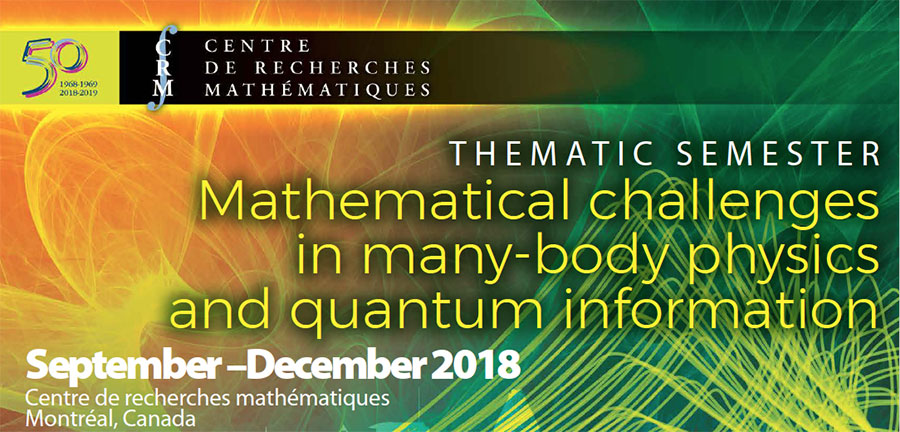AISENSTADT CHAIRS
Svetlana Jitomirskaya
(UC Irvine)
November 12 – 16, 2018
Michael Aizenman
(Princeton University)
September 17 – November 16, 2018
Robert Seiringer
(IST Austria)
September 10 – 14, 2018
WORKSHOPS
Many-Body Quantum Mechanics
September 10 – 14, 2018
Entanglement, Integrability and Topology in Many-Body Systems
September 17 – 21, 2017
CRM-PCTS Workshop on Critical Phenomena in Statistical Mechanics and Quantum Field Theory
October 3 – 5, 2018
Quantum Information and Quantum Statistical Mechanics
October 15 – 19, 2018
School on Mathematics of Non-equilibrium Statistical Mechanics, on the occasion of the sixtieth birthday of Claude-Alain Pillet
October 24 – 26, 2018
Entropic Fluctuation Relations in Mathematics and Physics
October 29 – November 2, 2018
Spectral Theory of Quasi-Periodic and Random Operators
November 12 – 16, 2018
